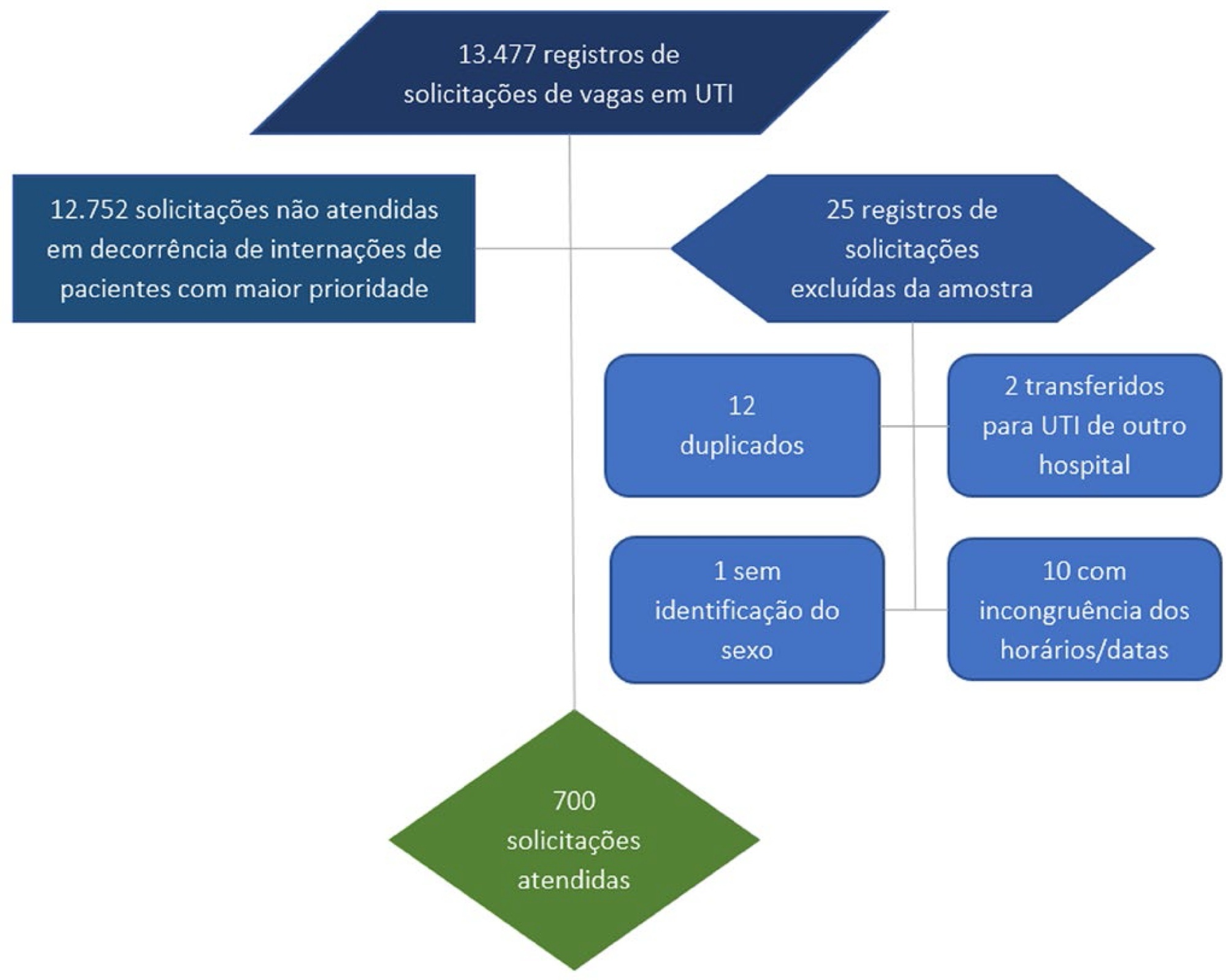
To evaluate the vacancy and occupancy times of intensive care unit beds; to analyze differences in these times between the day and night shifts and weekdays, weekends, and holidays; and to identify predictors of vacancy and occupancy times.
This was a cross-sectional, observational, descriptive, analytical, inferential study. A total of 700 vacancy-to-occupancy records from 54 beds of an adult intensive care unit of a public hospital in Sergipe, Brazil, dated between January and December 2018 were analyzed. The nonparametric Mann-Whitney test was used for comparisons between groups. Several predictive models of length of stay were constructed. The incidence rate ratio was used to estimate the effect size.
During the study period, there were 13,477 requests for the 54 intensive care unit beds, and only 5% (700 patients) were granted. The vacancy-to-occupancy times were shorter when beds were occupied at night (incidence rate ratio of 0.658; 95%CI 0.550 – 0.787; p < 0.0001) or on weekends (incidence rate ratio of 0.566; 95%CI 0.382 - 0.838; p = 0.004). Female sex (incidence rate ratio of 0.749; 95%CI 0.657 - 0.856; p < 0.0001) was a predictor of shorter vacancy-to-occupancy time. This time tended to increase with patient age (incidence rate ratio of 1.006; 95% CI 1.003 - 1.009; p < 0.0001).
Disparities in the waiting time for intensive care unit beds were identified, as the time was greater in the daytime and on weekdays, and women and younger patients experienced shorter vacancy-to-occupancy times.
Search
Search in:


Comments